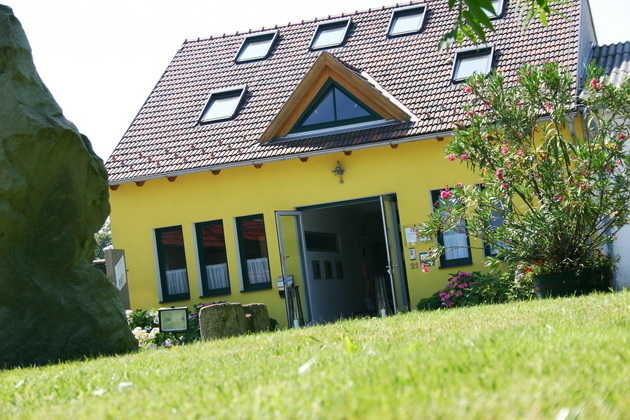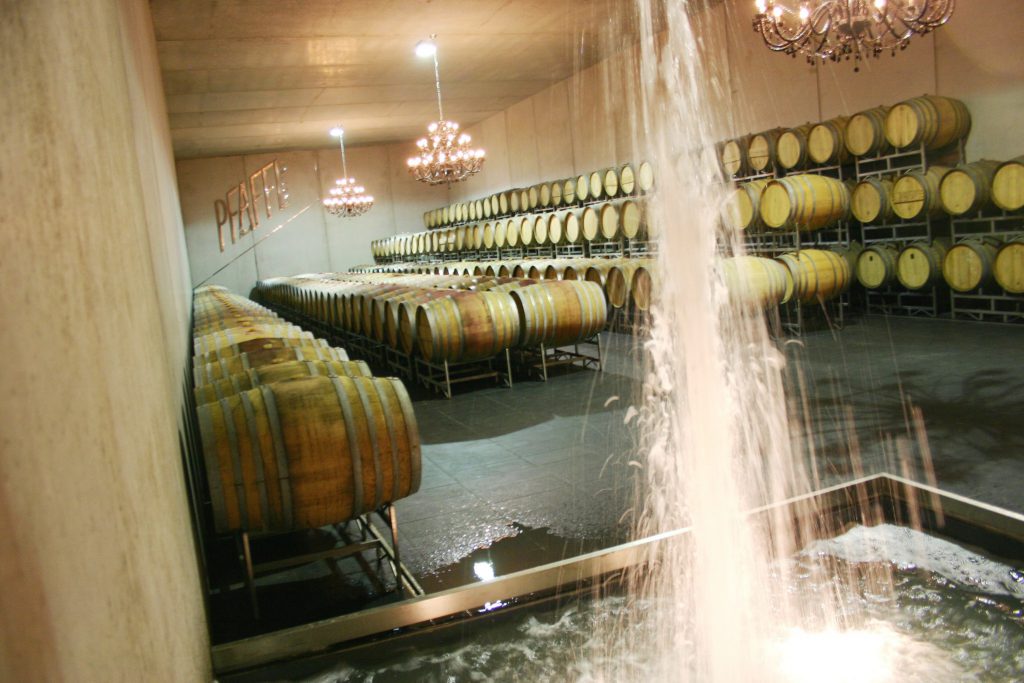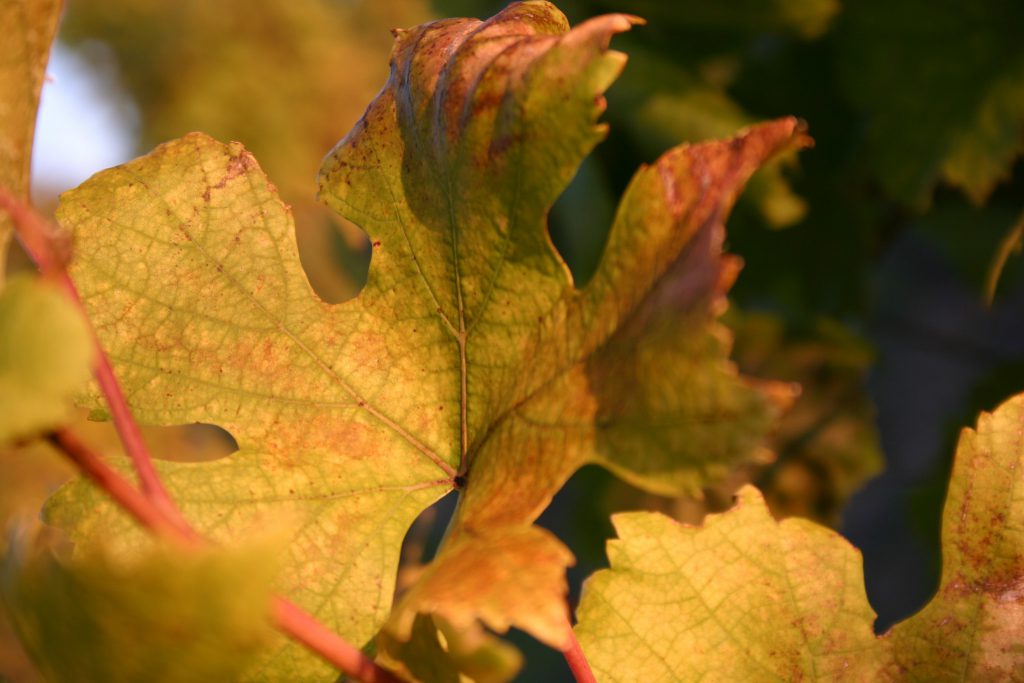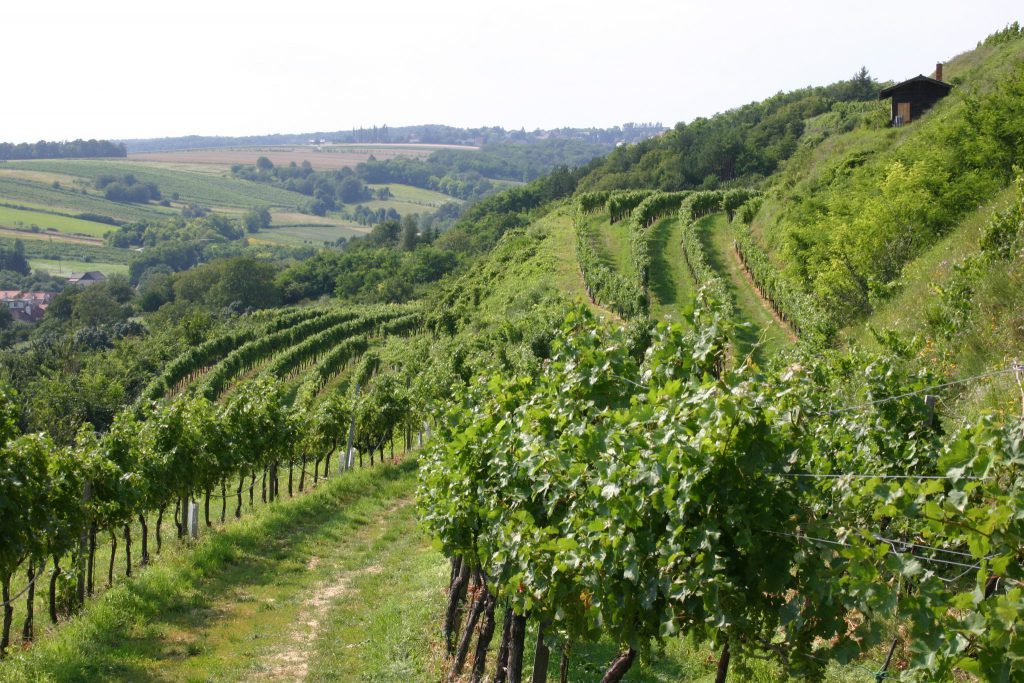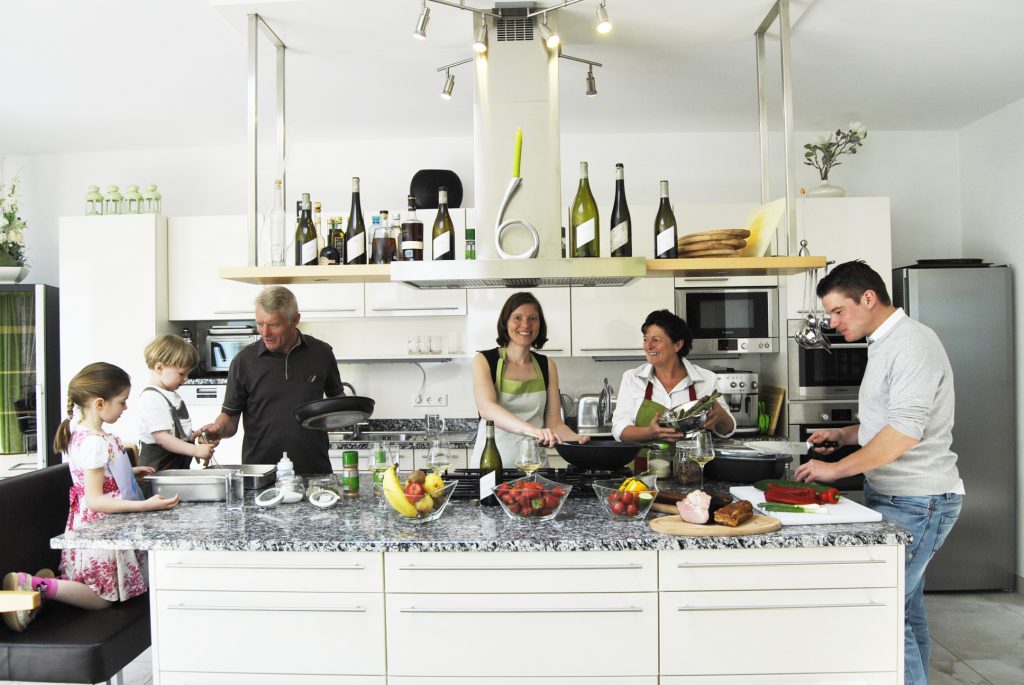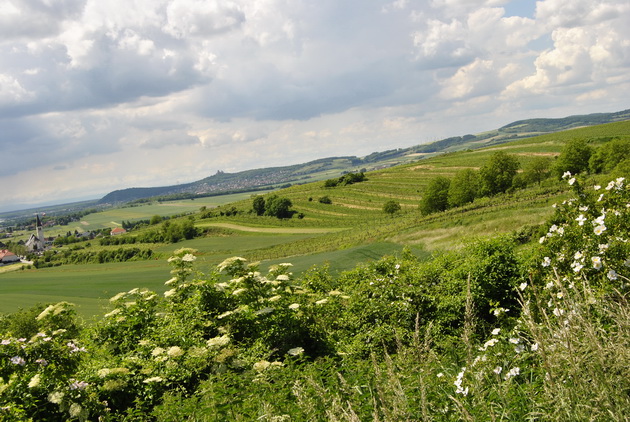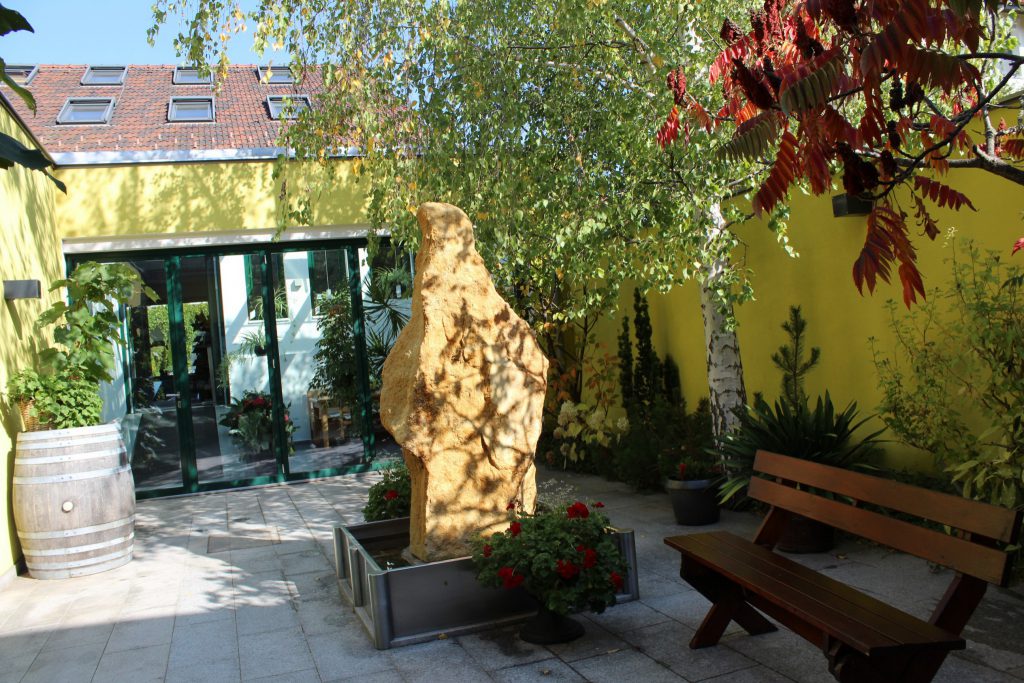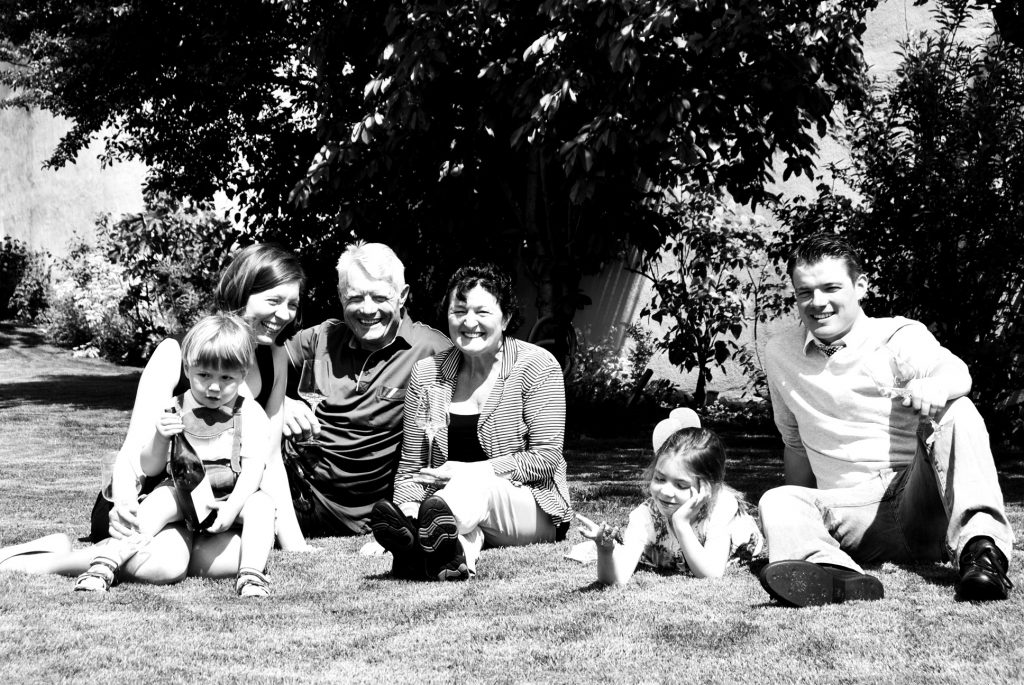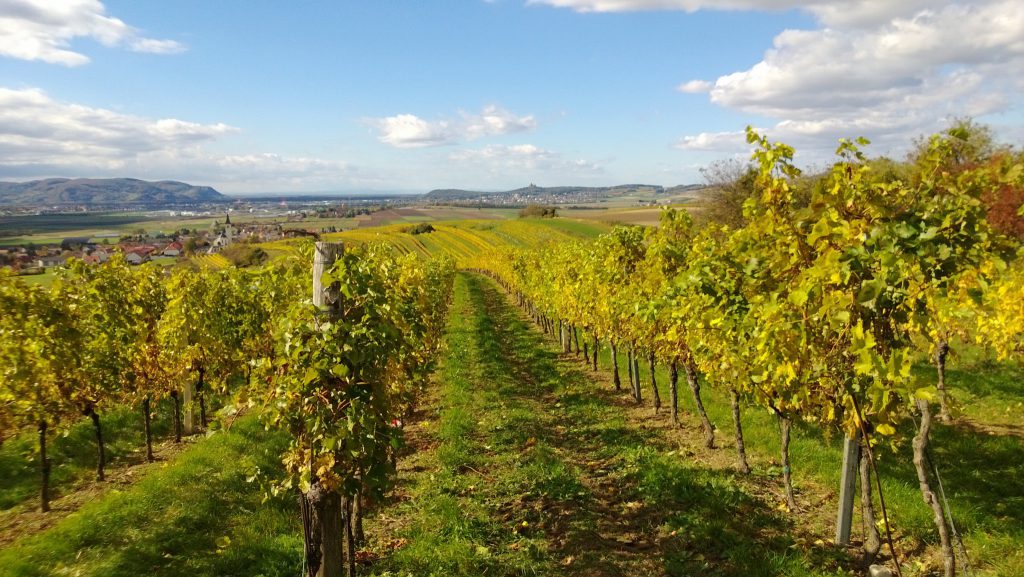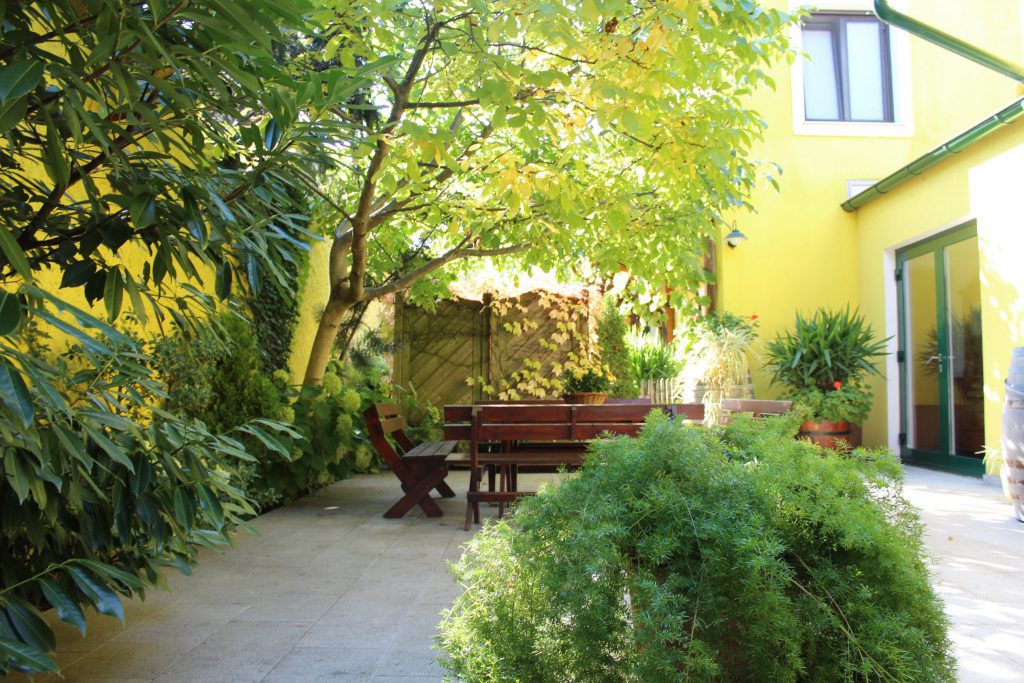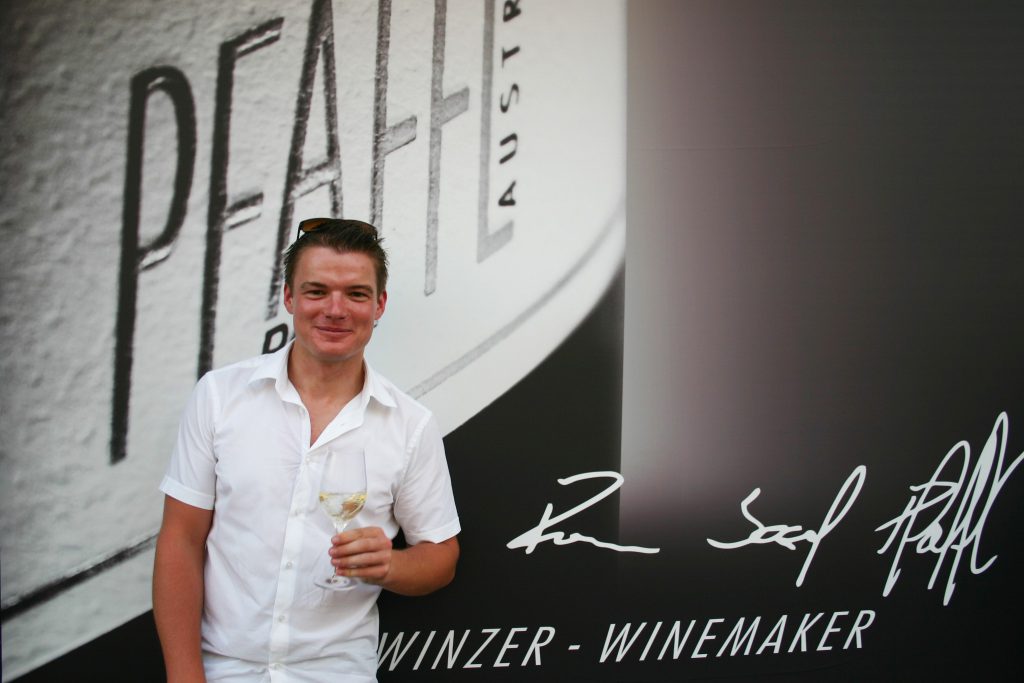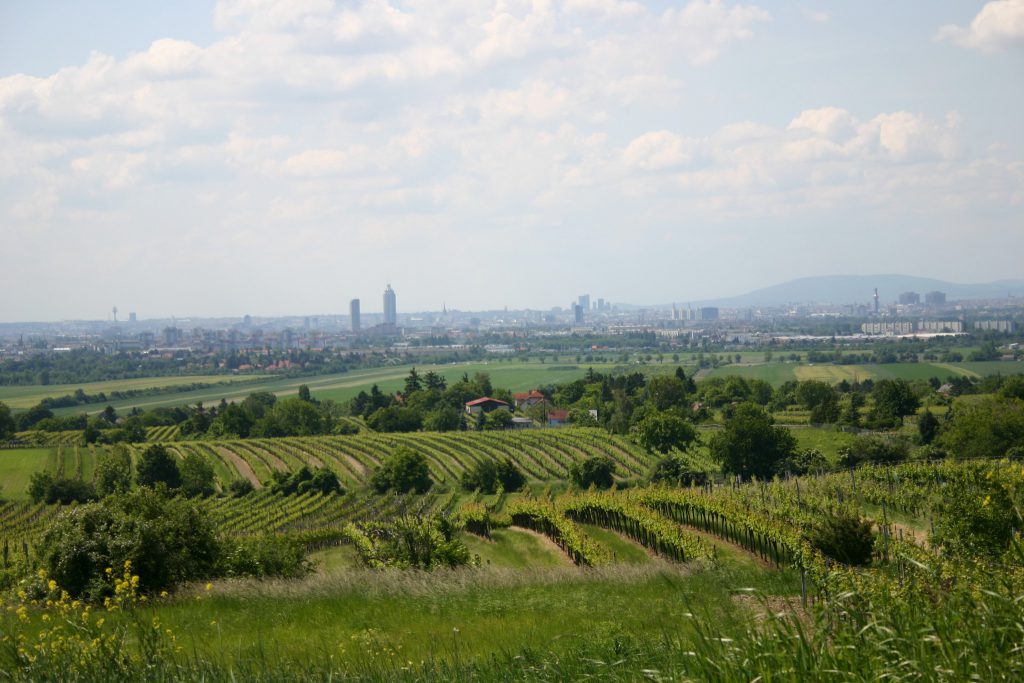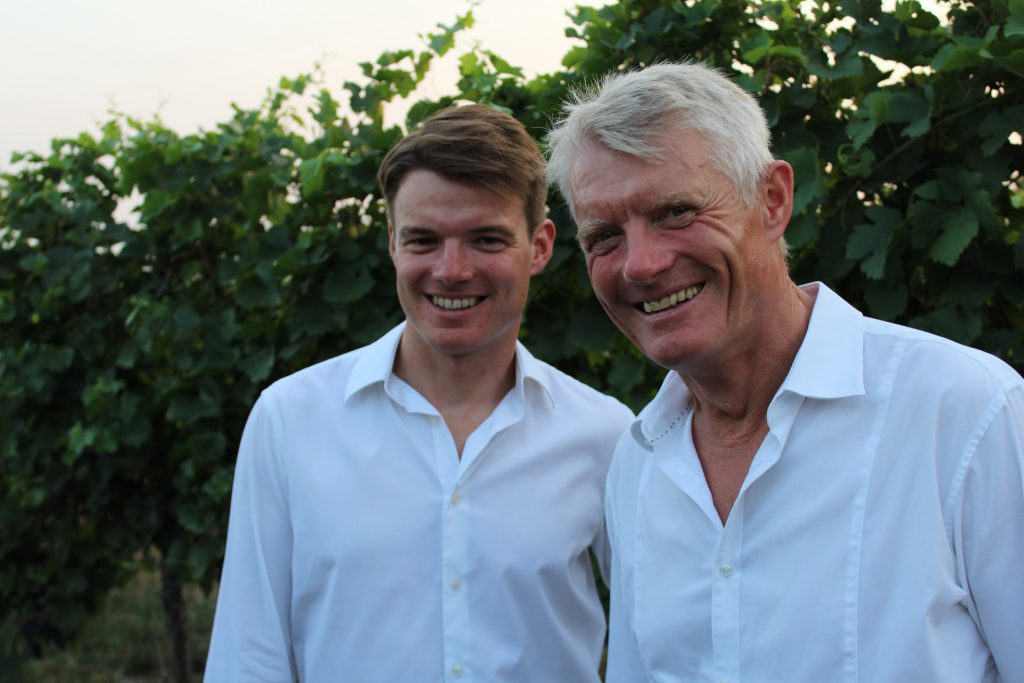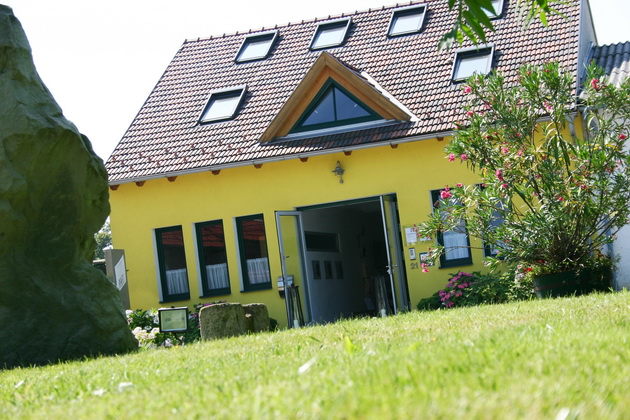Would you like to learn more about Austrian wines, especially its iconic grape, Gruner Veltliner?
Do you know why this wine is one of the most versatile wines on the planet?
That’s exactly what we’re going to learn tonight with our guest who joins me live just north of Vienna.
Our guest this evening is in charge of her family’s winery, Weingut R&A Pfaffl, along with her brother, who is the winemaker and vineyard manager. Heidie Fisher Pfaffl takes care of everything else, from business administration to marketing and sales.
Pfaffl Winery is one of Austria’s leading wine producers, and was recently named European Winery of the Year by Wine Enthusiast Magazine.
Click on the arrow above to watch the video.
Watch previous episodes of the Wednesday Wining Show (WWS) and find out who’s coming up next.
Here’s a sampling of our lively discussion from our tasting…
Lori Kilmartin28:53 Are all 6 wines tonight Unoaked?
Lori Kilmartin19:05 What is your favourite food and Gruner match?
Lori Kilmartin1:46 Yes I have had an Austrian Gruner – a few times
Lori Kilmartin47:08 Can this red age or are they best drunk young?
Lise Charest Gagne47:35 I’m making homemade wontons would your Gruner be good with that?
Floyd Curtis53:16 Yes. Many different varieties. When I lived in central Europe, I used to drink a lot of Austrian wines and was never disappointed. It’s funny, but hearing the names of these varietals is like a trip down memory lane. Müller-Thurgau, Neuburger, Welschriesling, etc. Great show!
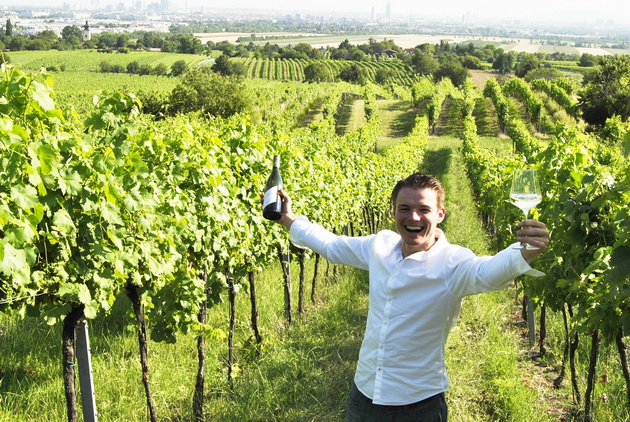 Roman Pfaffl in R&A Pfaffl Winery Vineyard
Roman Pfaffl in R&A Pfaffl Winery Vineyard
Weingut R&A Pfaffl Wien.2-Red 2015
Austria
Weingut R&A Pfaffl Sandstein Zweigelt 2015
Austria
Weingut R&A Pfaffl Waldgarten St.Laurent 2013
Austria
Weingut R&A Pfaffl Haidvertel Gruner Veltliner 2016
Austria
Weingut R&A Pfaffl Wien.1-White 2015
Austria
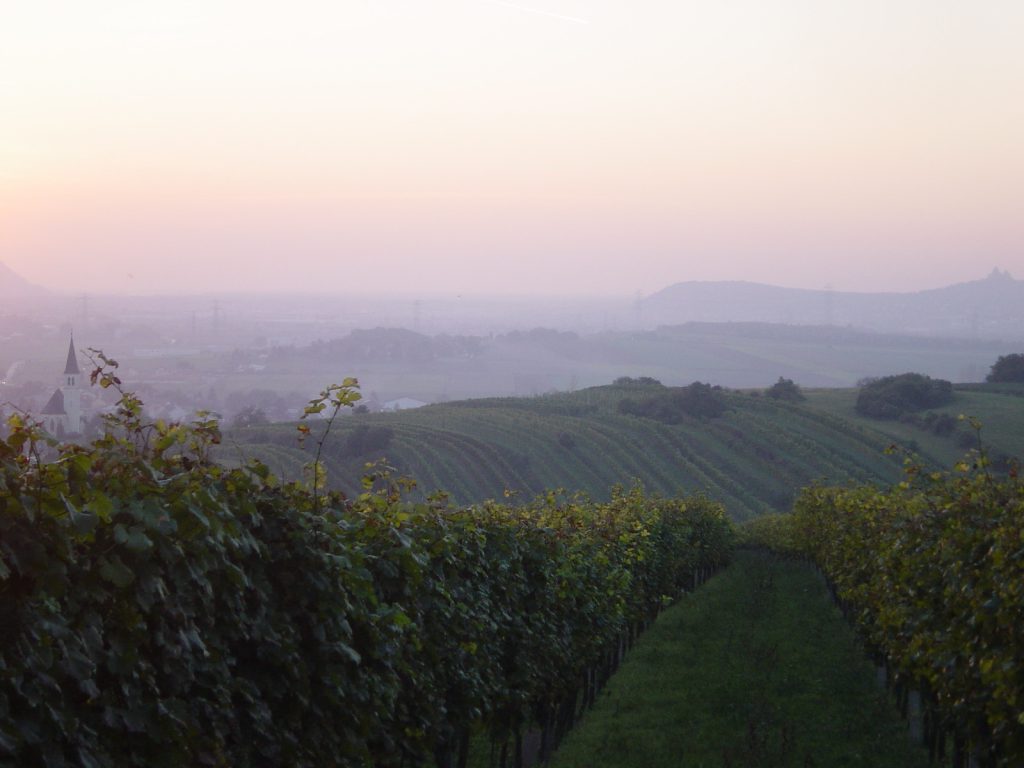 Pfaffl Winery Early Morning Mist
Pfaffl Winery Early Morning Mist
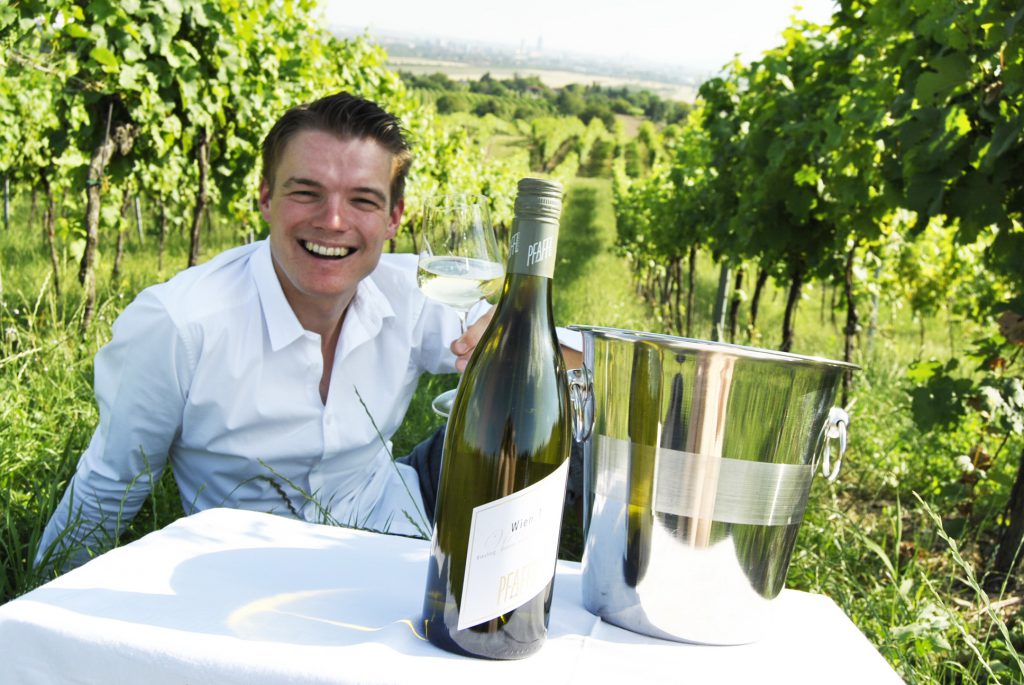 Pfaffl Winery Winemaker Roman in Vineyard
Pfaffl Winery Winemaker Roman in Vineyard
Weingut R&A Pfaffl Zeiseneck Gruner Veltliner 2015
Austria
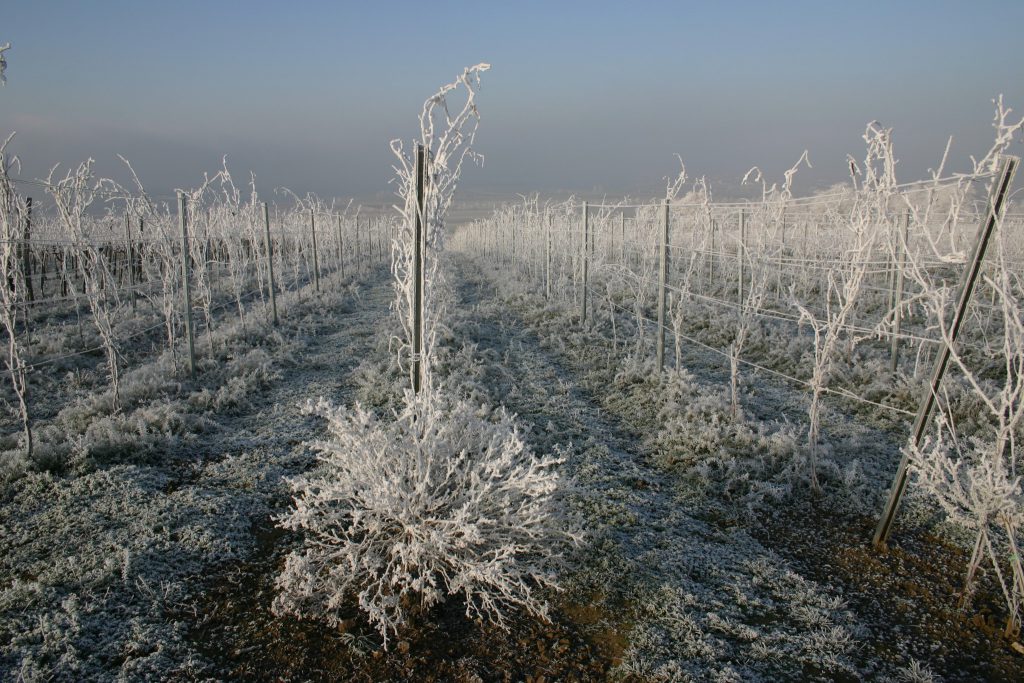 Pfaffl Winery Frost on the Vines
Pfaffl Winery Frost on the Vines
We are two siblings that manage our family winery together. Roman Josef Pfaffl is our vineyard manager and winemaker. He sees it as vital to take responsibility for these tasks personally. Roman’s sister Heidi Fischer takes care of business administration and her specialty, marketing.
Our parents, Heidi and Roman Pfaffl, support us in every way they can and we are grateful for this. We are a great team. Roman Pfaffl is our expert in the vineyard.
Heidi Pfaffl is the heart of our entire family enterprise. She takes good care of us as well as our guests. You will usually find her adoring grandchildren, Heidi’s children Marianne and Josef, close at her side.
Our Pride and Joy is our vineyards. Of this, we are very much aware. We cultivate around 110 hectares.
Our vineyards are distributed around the village of Stetten in the Weinviertel and in neighbouring Vienna. Due to the numerous vineyards and their diversity, we are able to produce a broad spectrum of wine styles.
It is always exciting for us to see how each terroir is expressed in its wine.
Handcraft is at the core of our wine philosophy. Respect management of our natural resources and our environment is very important to us. Meticulous canopy management, manual selection of grapes, and sensitivity for the vines’ needs make it possible for us to cope with the vagaries of the weather and produce top quality wines year for year.
To create perfect conditions for the wines in our cellar, we shy from no cost or effort. Perfect hygiene, meticulous temperature control in all areas, optimal humidity, minimal pumping, and protective handling are provided. All of these efforts aid us in transporting the superb quality from our vineyards directly to the bottle.
The Rhombus – that’s our brand mark and stands for everything we put in our wines: the work in the vineyard, the precision in the cellar, the passion for the wine and for our winery.
You are, of course welcome to come and taste our wines, visit our winery, or purchase wine on the premises. We stage a big event at least once a year to which you are cordially invited. We are also open from Monday through Friday from 8-12 AM and 1-5 PM.
– Would you like to know more about Austrian wines? Especially it’s iconic white wine grape Gruner Veltliner, and why this is probably one of the most food-friendly wines on the planet. We’re going to learn about that and a lot of other things about Austrian wines tonight, with our guest who will be joining us in a minute. I’m Natalie MacLean, editor of Canada’s largest wine review site, at NatalieMacLean.com, and you’ve joined me here on the Sunday Supper Club, where we meet every Sunday at 6:00 pm Eastern, that’s Toronto/ New York time to talk to the most intriguing people in the wine world. Now before I introduce our guest, first I want to say welcome everybody! We have a growing number of regulars, which I absolutely love, so welcome, I know you’ll be posting. But I also want to ask in the comments, let me post a question here as I refresh my own Facebook page. Just yes or no in the comments, have you ever tried a Gruner Veltliner wine from Austria or elsewhere, but I think Austria’s really the place where it is and I want to welcome Laurie, and Paul, and Beverly, thank you for checking in, for letting me know you’re there and you can hear us. So great, so let me know in the comments, have you ever tried a Gruner Veltliner? And if you’ve tried many, well then, let me know what your favorite one was, and what you paired with it. Now the other thing I want to let you know right up front is that if you share tonight’s video, you could win two bottles of very, very premium Austrian wine from our guest tonight, that’s Pfaffl Winery, leading wine-maker in Austria. All you have to do is click the share, and the end of the video, I’m going to be announcing the winners from last week. So five personally signed copies, DVD copies of the documentary Merlove. While you’re at it, you can click to follow, so that you always get notified when we go live. Alright, so back to tonight’s topic. So our guest this evening is in charge of her family’s winery, along with her brother, who is the wine maker. He is also the vineyard manager, but our guest does everything else, so she’s managing the business operations, the marketing, the sales, and everything else, and her winery, family-owned still, is Pfaffl, you’ve probably heard of it, especially if you’re a fan of Austrian wine, and she joins me now, live from the winery, just north of Vienna, welcome Heidemarie Fisher Pfaffl!
– Hi Natalie!
– Hi, hi, hi!
– Very nice to be with you.
– It’s so good for you to join us and I’m just loving the connection here, it’s really good, you’re coming in loud and strong, and clear, so you’ve given me permission to call you Heide.
– Yes please.
– So we’ll do that. So I am just going to check in with everybody else who’s logging in here, very quickly, Laurie, Murray, Paul, excellent, good, I’m glad you’ve tried Gruner, some of you haven’t, well you’re going to learn about that tonight. So Heide, I have shared some, just the briefest details about your bio, why don’t you fill in the gaps and tell us a little about your personal life.
-About my personal life, that’s very nice I never get asked that question, as I’m doing boring stuff in the winery As my father and my brother, they’re really the stars of the winery, of course now my brother, he’s wine maker, and also taking care of the vineyards, although he still has help in the vineyards from my father, and he was the one who was founding the company, and yes, we are, “A family winery.” As you say, my mom is also helping of course, she’s taking care of the winery as it looks of the guests when they come, and also of my kids, where I’m very grateful. And yeah, we are doing 110 acres of vineyards, quite close to Vienna, so we also have vineyards in Vienna, as we are so close, and the other ones, they are spread in roughly 10 different villages, so we have quite many different kinds of soils and different kind of microclimates, and that’s why we have quite a big portfolio of different wines. The most grape variety is of course the Gruner Veltliner.
– Gruner Veltliner, and we are going to dive right into that, I am going to welcome JP Dontremont, hello JP! He’s logging in from Alberta, or wherever you’re traveling on business tonight JP. Fred Clift, he has not tried Austrian wines, and he’s from Colorado. Well Fred, we are going to change your life tonight because you’re going to be trying Austrian wines, you’re going to get very thirsty. Laurie Kilmartin, nice to hear you are close family and everyone helps out. Yeah, I love when we interview family-owned and run wineries, and it’s fantastic that you and your brother Roman, Heide are now the second generation to run the winery, I guess your winery was established in 1978, is that correct?
– Yes, that’s correct, well established, my parents married in 1978, and they took over a farm from their parents, some old farm, it was only 27 acres of fields, and less than one acres of vineyard, an old settler, and where we are in today, in our office, this used to be the stable for the cows, anda stable for the pigs where we now host our guests, so we’re really a farm! So we were a farm.
– Yeah, and so your converted to viticulture from other types of agriculture?
– Yes, yes, step by step, step by step, my parents built everything up by when they married, my mom was 21, my father was 27, they bought a house in a nearby town, and there they owned up a Heuriger, do you know what a Heuriger is? That’s very typical to Austria.
– [Natalie] Okay, great.
– That’s a kind of restaurant where the winemakers sell their wines, and when you come to Austria, you definitely have to come to a Heuriger where you can really drink good wines at a very good price, at a nice price, and with farmer’s food.
– Heuriger, is it called? Heuriger?
– Heuriger, yes, or there is a second word, which is Bushenshank.
– Okay, equally difficult
-Yes! You can translate by, or something like that.
– So that’s helpful Just kidding, it’s just my North American dialect. It’s me not you, so Heidemarie, I know your brother is the winemaker, vineyard manager, winemaking’s in the family, but was there a moment when you realized, “I actually do want to be in the wine industry.” As opposed to going off and doing something else in the world?
– Oh yes, oh yes definitely, there was, yes. The thing was that when I was in school, just in high school, when I came home after school in the afternoons, my father always had something to do for me, because he was at the moment building up his first export market and he didn’t learn English in school, he’s a real visionary in what he do and always is one step ahead, but unfortunately he had no English in school, so what I had to, coming home from high school, he had some wine buyers from somewhere that he’d got at fairs or somewhere, and I had to call them, and it was really, really hard because I had no idea how to talk to wine buyers and I had no idea about English, so a little bit of school English, but not a lot, so that was really hard at the beginning. But step by step I got into it, and he sent me to London and other states to access us to wine tastings, I did it already, was 15 and 16 years old, and it was really nice, and so I came into it.
– When you were just 15 and 16 years old?
– Yes.
– Oh wow. What an introduction, that’s fantastic, and so now we’re really familiar with Austria, well we know Austria’s a great wine producer, and we know it’s a cool climate, it’s Northern European, but what don’t we know about Austrian wine that might surprise us?
– Well of course I don’t know how much you know, but what I think is really very interesting at the moment is that we at the moment have a big group of young and very enthusiastic winemakers that want to produce really high quality, and I also say that we have a big audience of consumers, also here in Austria, that appreciate what we are doing, and really, that’s giving an energy to the whole scenery that I really enjoy.
– Excellent, I’m going to check in with our folks. They’re saying, I think we’re getting an echo perhaps folks, but confirm with me, only when Heide is on the screen alone. I think the echo is not here when we’re two-shot like this now, or when I’m going through the photos like this, I’ve got all sorts of photos here from your winery, Heide, which are beautiful. But folks let me know, because I will avoid the shot that has the echoes for you. Yes, Mark is saying, “Correct.” Okay, that’s what I thought, I was doing a test earlier this week, again, it’s me Working with this technology, struggling it to the ground, but so just so I know, “Yes, only when “you’re on a single shot.” Gotcha, okay, that’s fine. I will avoid that folks and I will get that worked out between now and next week. So Heide, I’ve got tons more questions, but I often get so carried away with the conversation, I forget almost to taste the wines. We want to dive right into Gruner Veltliner, right? And so I’ve got a few here from you, but Gruner, that means green, right? Does that translate to green?
– That’s correct, that’s correct yes.
– And does Veltliner translate to something that we would be familiar with?
– No, no, not really.
– Okay, so green whatever. Okay, so I’ve got an entry level, the Wein.1, why are you calling it Wein.1? And by the way folks, all of our wines that we’re tasting tonight are in the blog post. And JP, you are welcome, or I should say Heidemarie is glad to join you from Austria. Okay, so I’m going to just post that link to where all the wines are, folks. And alright, the Wein.1, you’ve got it too. So this is actually a blend of Gruner, Riesling, and Pinot Blanc, so tell us about this wine, Heide.
– Yes, we call in Wien One that means Vienna, that’s the German word Vienna, and we call it Vienna One because it’s our first wine from Vienna. It was in the year 2004 that we got some vineyards in Vienna and we were very proud, it’s quite rare and unique to get vineyards in Vienna, although it is the biggest wine producing main city in the world, I think? But still, the vineyards are of course quite rare, and what we wanted to do here is to make a real typical wine from Vienna which should spritsy, lively, and refreshing.
– It is, it’s beautiful. It’s so crisp, it’s so lively. I love the acidity, people we should not be afraid of acidity, that’s what makes wine come alive. Excuse me.
– That’s true.
– Absolutely, it’s so good. So I don’t know what, so you say V and W are sort of, for us, our Anglo tongue, Wien W-I-E-N is Vien, and that means Vienna?
– That means Vienna, yes. It looks like wine, but it’s not, when we would write wine in German, we would make the E first and the I afterwards.
– Okay, so it is different, So the Vienna just doesn’t mean Wine City or something?
– No, no
– Okay Just checking, but I still want to visit. Okay, and Laurie is asking, “Is Gruner Veltliner “always made with stainless steel, no oak?”
– No, no. For example, we have five different single-vineyard Gruners, and we have them in stainless steel until maturity, in Acacia wood, for example. But we also have some oak, oaked Gruner Veltliner.
– Okay, okay, I never knew that Gruner could have oak on it, but that’s interesting. Okay, so Rick, hey Rick, he’s logging in from Moscato, California, excellent!
– That’s very nice
– Yes, absolutely. Beverly, I hope you’re getting our reception back because I think we’re still going well, as always, let me know if there’s any problems here folks, I’m avoiding that one shot, okay so Murray is asking, “What is the price range “of all of these wines here?” I know we’ve got six here to taste, but I think I might also just offer that I believe your agent told us they’re around between $19 and $23, $24 so very affordable, I think, in Canadian dollars, that’s kind of where they’re coming in at, price point wise, is that about right?
– That’s possible, I don’t–
– Oh, that’s okay.
– I don’t know exactly, but I think yes.
– That’s what he told me, so
– I’m sure that’s true
– Yes, yes, and I think we don’t know a lot about Gruner Veltliner, at least here in Canada, maybe North America because it’s one of those wines that’s hard to say, it’s not one of the ones that has been around a long time, like we’re familiar with California Cabernet and so on, but it offers just so much drinking pleasure, and food versatility, now you were talking about, “Why Gruner Veltliner “goes with so many food matches.” Heide, is it white pepper, you were saying, or black pepper is that note that’s in Gruner, often?
– Well I think people find both notes, for me it’s easier to reckon the black pepper, but I have often heard about white. So I’m fine with both. Well yes, I think that Gruner goes very well with many different kind of foods. But also, because Gruner can be so versatile, y’know? You can have a Gruner that’s lively and fresh, but you also can find quite rich and full-bodied Gruners that somehow reminds you of Chardonnay, we often have tastings of old Gruner Veltliners, in comparison to old Burgandy wines, and it’s often hard to find the difference.
– So they age well, they would, because they’re got the acidity, which is one of the aging elements, yeah.
– Yes, but also because not all of them are the same, you know, you have some very full-bodied, rich ones that age really well, the preserve styles, but you also have these easy drinking, lively, fresh Gruners, they are really made to be drunken young.
– Wow, and so Fred Clift is asking, “Which sells “better in Austria,wine or beer?” He’s asking, “Wine or beer?” I thought he was going to differentiate between the different Gruners, but he wants to know, “What still sells best “in Austria itself, wine or beer?”
– Wine or beer?
– Yeah!
– Well, now I’m on a bad side, because you can Google that, but I think it’s fine. I mean, we are here at the wine region, but in the more mountainous areas, there is probably beer stronger, so I don’t know what’s the matchup.
– Okay Fred, well we’re all concerned about wine tonight, but you know it’s funny because in the Northern regions, including Canada, they were traditionally beer producing, beer drinking countries, so Germany, Austria, Canada, all along that Scotland, all along that Northern border, I guess Scotland was whiskey, were all beer and spirits, but in the last five to 10 years, there’s been such a revolution, an explosion of wine drinking and wine producing, it’s pretty interesting. I want to welcome Olivier DeMesenhoeuf from Montreal, “Hello you two.” Well hello Olivier. “Is there a special.” Let me expand my screen here, the comments are going so quick. “Is there a special type of Gruner you go for? “Are some more green apple accented, “and some have more of the pepper, spicy character? “I just joined so I hope you haven’t mentioned that.” No we haven’t covered that, Olivier. So Heide, do you find that some Gruners are more of that green apple, whereas others lean more to the pepper spice character?
– Definitely, definitely, yes yes. You can, as I said, you can have a big variety, sorry, so different Gruners. From this very peppery spicy, which are my favorite, to be honest, but also the green apple is a point from the very fresh Gruners, and then you can have this soft and round Gruner Veltliners that have always at the end, all of this peppery spice, which I think make them very drinkable and very good, well going with food.
– And why do you like the pepper spice, I’m drawn to it too, is it because it’s exotic, or just so different from everything else, is that why you like it?
– Well I think it makes it somehow interesting, you know? You want to get another sip, you don’t get fed up of the wines really, they make it really drinkable, they are not so, how should I say, they don’t spring out of the glass, they’re not so extremely fruity or something like that, but with this peppery spice, you just said, “Well, give me another glass.” They’re just so drinkable.
– And absolutely, that’s the best thing a wine can say So JP says, “I’ve not heard of your winery, “any plans for building up your brand in Canada?” So your agent of course will know more about this, Heide. But know you come out occasionally through Vintages in the LCBO. JP is in Alberta, but I’m sure you have some distribution throughout Canada, and hopefully are you expanding in Canada, do you have plans that way?
– Yes, yes, we hope to get into Quebec soon, we hope to get into Ontario on a stronger basis, so we are steadily working on that, of course that’s not something that comes so quickly with monopoly states, it’s always quite difficult to make the first steps, but I think we will make it.
– Yes, always a challenge with the monopolies Understatement of the year, so hello Ms. Lees, I’m glad you’re joining us from Northern Ontario, and Laurie, “What is you favorite food pairing for Gruner?” Heide.
– That’s very easy, we really like to eat it with the traditional Austrian cuisine, which is a wiener schnitzel. Do you know what a schnitzel is?
– Why don’t you explain, for me, and everyone else who may not be so familiar with a schnitzel.
– Schnitzel, that’s a slice of meat, the traditional wiener schnitzel is made of weal, and then you fry it, so you give it a panade first, you give it into wheat, and then to egg, and then into crumbled, how do you say it in English?
– Yeah, like breadcrumbs or something?
– Breadcrumbs, I’m sorry, yes.
– Yes, the veal, the veal is going through that, yes.
– Yes, and then you bake it, and that’s–
– You could also do pork, right? = Yes, that’s what we do in our area. In our area, we are so close to Vienna, but still the schnitzel is done different. We do it with pork, with slated pork, so it’s red meat, it’s a little bit more spicy.
– And so we’ve got this spicy red meat going with this zesty white wine that often doesn’t have oak on it, how does that work?
– I think that works wonderful, and we always have potato salad with it, and our potato salad is always a little bit sweet, in our area.
– How’s it sweet, what’s giving it the sweetness?
– We add sugar to the sauce
-That’ll do it!
– Oh yes! There are not too many regions that do it, they don’t do it in Austria, it’s just our region that adds some sugar to it, and of course vinegar. And yes, I think that that really fits well with Gruner, but that’s really difficult for me to explain, particularly in English. I hope you come to Austria and try it once.
– Yes, that’s the best way to learn about anything, go to where the wines are made. Rick Deldaris is saying, “What cheese?” Oh first, Olivier is says he, “Loves wiener schnitzel.” And Lee says, “Delicious!” Patty and Paul, “Haven’t heard of your brand “locally in Virginia, yet!” I think they’re on the hunt, but Rick is asking, “What cheese “goes best with Gruner Veltliner?” What cheeses would you recommend for this wine, Heide?
– That’s difficult, that’s really difficult.
– Is it?
– So yes, I think so, I’ve never thought about the cheeses and Veltliner to be honest.
– [Natalie] Okay, I would think creamy.
– No, I am wrong. Sorry, I just recall. I had this June, but how do I translate it in English? We call it bachheiser, which is a cheese from the Austrian mountains,region. It was 18 months ripened, and I had it with a 2004 Gruner Veltliner this June, and it was just delicious.
– That sounds good, so was it a soft cheese, a hard cheese?
– A hard cheese.
– A hard cheese.
– A hard cheese, but 18 months ripened, really a kind of salty cheese.
– Okay, like Parmesan?
– A little bit like Parmesan, not at hard as Parmesan.
– That sounds good, and what happens to Gruner as it ages, does it get nuttier? What are the characteristics that comes out in a Gruner as it ages?
– Yes, nutty is perhaps the right word to describe it. For me, it ripens quite similar to Riesling in a way. But you don’t get these petrol notes, but it reminds me of Riesling when it ages, yes. But also of old Burgandies, if it’s a full-bodied Gruner that is matured in wood of some kind.
– That’s interesting, wow, so much to learn. Okay, so we have another Gruner here, this one I have is, I’m not going to pronounce it correctly, Viener Weinviertel?
– Weinviertel, Weinviertel, do you have that size in it?
– Sorry, oh you can’t see this. Which one are you asking about? I have Weinviertel.
– The vineyard, the vineyard is Zeiseneck, right under the Weinviertel.
– Oh right, I have Hader–
– Haidvertel.
– Yes, I have that one.
– Alright, that one would be in the second row, but we can do that first, or just after will be fine. Haidvertel, that comes from a stony soil.
– Okay.
– I brought the stone here, it’s kind of sandstone.
– You have the real stones?
– Yes.
– Oh show us, right up to the camera so we can see, please.
– Do you see it if I just put it here, or I should I move–
– Yeah no, bring it over, if you can hold one up really, that would be great. We love props.
– So here it is, do you see it?
– Oh that’s a big prop, yes
– [Heide] Yes, it is huge.
– So what is with that? What’s with that special stone, what does it do for the vines?
– So this is a really rocky vineyard, it’s a sandstone, a bit of quartz, it’s called flusch, and it makes powerful and rich wines. Haidvertel has it only on the subsoil, and on the very top, it has thick, lusc soil. Lusc is a kind of light loam. Like loam but with more sandy, sandy character.
– And for those who don’t know, what is loam? Just to define it.
– How do I say it English?
– Light soil?
– It’s a fat soil, it’s a fat, but sandy… How do you call it? I’m sorry.
– Sandy, sandy, that’s okay, that’s alright.
– Yes sandy, but a little bit fatter, lusc is something that really saves humidity.
– Ah, it absorbs the moisture.
– It absorbs the moisture.
– For dense, density yes.
– Yes, whereas sand, it drains through, that’s not the case for lusc.
– Okay, interesting, so back to that stone you just showed us, how is that affecting the vines?
– It’s making them really spicy and powerful, that’s what I find out here, and I also found literature from many, many years ago, from the 17th century that explains the same thing, which I found really interesting.
– Huh, well there we go. Okay, so Olivier says, “Bargaze “seems to be a bit like Groier.” Oh, you’re talking about the cheeses. Simon Gagne, hello, “We like it with fish.” yes, absolutely Simon. This Gruner is the ultimate I think with seafood, shellfish, all of it. It’s so fresh, and you now for me is when the wine is a palette cleanser, literally sort of scrubbing your tongue with the acidity, or in the case of sparkling wines bubbles and so on, and makes the bite of the food taste even better. So if you’re just joining us by the way, we’re here on the Sunday Supper Club where we join every week at Sunday, 6:00 pm Eastern Toronto/ New York time to talk to the most intriguing people in the wine world, and I must say folks, if you are enjoying this, please share the video, because next week, even if you’re watching the replay, we will be drawing for two wines, Pfaffl wines, if you wanted to try Austrian wines, this is your chance! And at the end of tonight, I will be drawing for last week’s winner, five personally of the DVD documentary Merlove, and while you’re at, you can also follow to know when we go live. Alright Heide, so you can take us, we always love to hear stories, personal stories, and can you take us to the worst moment of your winemaking career, not wine making, but wine career, I know you’re not the winemaker. We always just love to hear the story behind the person in the wine, do you recall any moments where you just went, “Oh, that’s got to be the worst moment yet?”
– Oh yes. That’s difficult, I mean not really, I can’t recall anything of the recent past, but I go back to when my parents started again. I was somehow around 20 years old or so, I was starting to go with my boyfriend, and my sister was still with hers. My father was bringing the glass bottles from the washing, andhe called us because he had an accident with his truck and all the glass bottles were on the floor, in the middle of the street where our boyfriends were living, so we had to go there with everything we needed to get that off the street and it was so blameful
– It was mess.
– It was a mess!
– Very blameful!
– We were staying and hooping, and it really blow.
– So that must have been mortifying as a young person.
– Absolutely, didn’t like it.
– So let’s take it to a a happy story.
– Yes
– I always ask the worst and the best. What’s the best moment you’ve had to date? I’m sure there will be many more of being in the wine business, what is your favorite moment so far?
– Oh that’s really difficult, there are so many, y’know? There are really so many because that’s happening almost every week, I have people here from all over the world, and you taste wines together with people, hear stories of them, and I’m so often thinking of what am I doing here, is it really a job?
– “Is it really a job?” That’s a good catchphrase, you know you’re doing what you love when you say, “Is this really a job? “Are they really paying me?” Yeah, I can identify. Alright so Paul, Paul and Patty in Virginia are saying they, “Love Gruner “with Cedarplank salmon, mm, mm good.” Laurie is asking, “Are all of the wines tonight?” Uh no, let me come back to that, Murray just before you slip off, “Great knowledge tonight, love it.” Murray, I’m so glad. Murray you’re going to want to hang on until the end too when I announce the winners! But back to Laurie’s question, “Are all six wines tonight unoaked, Heide?”
– I have to say yes, these are the fresher wines in our portfolio, we also have some oaked wines. The Zwiegelt and the Sunkloufen are the two red ones, they have seen oak but only old oak, so they don’t really fit that.
– Neutral, and why do people, why do winemakers age in old oak? If they’re not wanting the oak character, what’s happening with the wine if you’re almost in a neutral barrel? What are you trying to achieve?
– It’s still such a difference, you have the wine breathing, you know? If you just put it in a stainless steel, you can achieve a great fresh fruit, but when you have it in an old barrel, you have it breathing so it gets a little bit rounder, it gets more full-bodied, if it has the body of course, but it gets more harmonious for these red wines I think, yes.
– Very interesting, excellent. Laurie’s got a great question, “Would you Heide encourage your children “to get into the wine business?”
– Oh yes, oh yes. I wouldn’t ask them that they have to do it, y’know? But I try to show them how nice it is and how beautiful.
– [Natalie] Oh, I’m just showing some pictures of your family in the kitchen, but just before we went to that shot, which I know you can’ see Heide, but it was in the cellar, and you’ve got some sort of fountain, I think you call it, “The Wine Spa?”
-Yes, well the rude ones. Yes we have it, this is our barricole, where we have these fountains that was my idea to get some humidity into the cellar.
– So it’s a spa for wine barrels, but and so you’ve got this fountain going on, it’s beautiful, but it also, and what it humidity doing? Seeps into the barrels and results in less evaporation?
– You need humidity in each baricole, in each hole where you have the wooden casks because they would get dried too quickly, and with that you lose a lot of wine, the wine dries, so you need humidity, that’s also what you have in these old wine cellars, but as this quite a new big wine hole, we get the humidity in with these wine fountains.
– Or the angels would be getting drunk, so we call the 2%–
– Ah yes, that’s very nice.
– Drunk angels I’m sure would still be a beautiful thing, but let me just define what I mean by that,
– I know!
– Yes, I know you know! So the 2% or whatever evaporates naturally from oak barrels, winemakers have traditionally called, “The Angel’s Share.” So we lose to evaporation, and the angels get to enjoy. But I don’t think, you know, everybody should be reigned in, including the angels, so.
– That’s a nice phrase, I didn’t know that phrase.
– Oh you didn’t know that one?
– No I didn’t know that phrase.
– Okay, The Angel’s Share, yeah. Ah okay, Rick Deldaris says, “What kind of oak barrels “do you use, Heide?”
– French oak.
– French!
– But that’s for the oak, that’s for in these French oak barrels we now mature Chardonnay, Cabernet Sauvignon, Merlot, Pinot Noir, Spiegler, and Svechlaufen. We also used it for Gruner Veltliner in the past, and we found out it’s very well for Gruner, but you have to age Gruner when you put it into oak, They are great when you drink them with them with some years. We stepped back from that because many people just like drinking Gruner a little bit younger, and now we go to the kind of oak, to the kind of wood that is traditional in our area, and that’s no oak, but Acacia.
– Acacia!
– Yes, we now use 200 liter Acacia casks for our Gruners.
– So that’s a tree you’re using?
– Yes, that’s just another tree, not oak but Acacia, and the wine gets from this kind of wood not this really oaky character that you know from Barique, it just gets a honey touch, a touch of honey.
– Oh, I love a honey touch, yeah absolutely. Very nice, okay.
– And that’s for the Gruner.
– Excellent, so I do want to, I think we’ve looked at both of these, you have another Gruner there? I’m just sorting my bottles on my table here, and so tell us about this other Gruner that you have.
– Zeiseneck, WeinviertelZeiseneck, Zeiseneck comes from a vineyard where we have fossil oysters underneath, and it’s growing on the biggest fossil oyster reef in the world.
– So fossil oysters would result in limestone, is that right, or not?
– Yes, we have less on top, but underneath we have this fossil oysters, you can use–
– Oh, can you put it close to the camera, then we can see better, there you go. Ah, is that limestone there, or what is that?
– No that’s a fossil oyster, that’s a real oyster.
– Oyster, okay.
– Yes, 17 million year old oysters and we have a huge reef here, you can see another one right here, perhaps you can see it better there.
– That’s so cool, I thought those were converted into limestone, any ancient fossils from sea creatures went into, but not necessarily, that’s not limestone?
– That’s just the fossil itself.
– Okay.
– We just found it in the vineyards, you just have to get mud off and the you have it right here, and there is a big, there is a museum here in Stetten where you can also look at this.
– Isn’t that cool, you’ve got ancient history in the vineyards. How do you think that affects the vines?
– It’s interesting that from this vineyard, we also get the most elegant Gruner. Fresh and lively and yes, very, very elegant, as we cannot achieve it anywhere else. And also this vineyard is quite close to forest, so the difference between day and night is quite big, it’s quite hot during the day, quite cool during the night, and it also keeps the acidity a little bit fresher. I guess it’s our freshest, liveliest Gruner.
– Wow, so interesting. So JP asks, “I noticed on Google Maps “that your winery is is situated “north of the Danube River, “are there significant differences in wines, “north versus south of the valley?” Good question, JP.
– Well yes, yes and no. May I show you the map?
– Yes please, nice and close, there you go. Yeah, gotcha, yeah.
– We are here in the Weinviertel area–
– Hold is up a little bit, yeah, yeah, gotcha.
– We are here in the Weinviertel area, and here you get mainly Gruner Veltliner, the fresh and lively Gruners, and when you go, the Danube goes somehow like this here, when you go more south, there you find there’s Burgen land there, you can find great red wines–
– Right, bit warmer.
– And also can find those great sweet wines that we have in Austria. So but around the Danube area really, you find the Gruners.
– And that must be a beautiful area to visit too, I’ve heard people go on sort of river barges.
– Oh yes, oh yes.
– Sounds so lovely. Well Rick asks, “Do you ever use cement vats “for your wines?”
– Pardon, I couldn’t understand.
– Sure no problem, Rick asks, “Do you “ever use cement vats?”
– Oh, I know what you mean now. No, we only have stainless steel in our cellar, and the Acacia wood, and the berry stone.
– [Natalie] And is there any reason you don’t use the vats versus stainless steel?
– I just think that we are quite content with the stainless steel and the cement vats, I personally don’t think that this is–
– Has the same freshness, yeah?
– Well yes, I don’t think that’s it’s something that we need to step into. We are quite content with the stainless.
– Gotcha, good.
– Yeah?
– Yeah, absolutely. Floyd Curtis, while he was living in Prague, “I had many Czech Gruner Veltliners. “Is there a big difference between Austrian “and Czech Gruner Veltliners?” Interesting.
– Yeah, that’s always very interesting, I didn’t have too many Czech Gruner Veltliners, to be honest, so I can’t tell you too much about this, I can… I can just say that Gruner is… Has been very, very trendy in Austria in the last 10, 30 years, 20 years? And so we have a big wine scene here from very different Gruners, as I said, these fresh and lively examples that we are also tasting today is the only a very tiny bit of Gruner, of the big Gruner scene in Austria.
– Yeah, and why is that, sort of Gruner Veltliner because the darling of sommeliers, so I remember going back, especially when I was in New York 10 years ago, it was so trendy, and still is, the world catches up with New York sommeliers, I am sure, but they absolutely love Gruner Veltliner, it’s like, “I don’t know what to have with this.” And they would say, “May I show you “a Austrian Gruner Veltliner?” How did it catch on fire with sommeliers first? Those key front line influencers?
– Well I think that’s just because it’s so good with food, and it’s also of course something that’s not so common already, so you can impress you clients a little bit, and also though, because I think there is, you can really find great, great wines here that you can really surprise your clients with.
– Absolutely, yeah good.
– But all this is of course still quite new, when my father started with winemaking in the 80’s, it was not sure that Gruner Veltliner would be the most important grape variety from Austria. The winemakers didn’t know where to go, they tried a lot with international grape varieties, until at the end, Gruner Veltliner won the match at the end.
– Huh, interesting, and what would be the iconic, speaking of red wines, we’ve got three reds here, so what would be considered the sort of red wine equivalent to Gruner? What’s the leading red wine in Austria?
– That’s Zwiegelt, Zwiegelt is the most widespread and like the Gruner, it is quite a spicy red wine, you have this pepperiness in there, but you also have a freshness in there, a kind of cherry fruit, so it’s a very, how do you say? It’s a very ruby red?
– Yeah, ruby red, yeah, absolutely. Cherry berry, but still with that bite, nice bite, of acidity. So I’ve just… Do you have it there with you, Heide, yes? So we’ll taste this one next, and again folks, all of those wines, I will post this again, are in the blog post, all of the wines we are tasting tonight, so I’m going to see if I can just copy this into the discussions. I have posted all of the wines, so here is the Zwiegelt. It’s just really interesting, I love these spicy, dark pepper, all kinds of things going on here, it’s so different.
– Yes for me, to recognize a Zwiegelt, you have to find the kind of cherry, morello fruit that I really enjoy a lot with this wine, it is quite dark in color, as you can see. But this is still, it has quite a strength, but it’s still a classical fruity example of a Zwiegelt.
– [Natalie] Absolutely, no it’s delicious. I love how spicy and peppery it is. So folks, have you ever tasted a Zwiegelt? I’d like to know in the comments. This isexcuse me, we’re getting into more rare and harder to find wines, but really worth seeking out, if you want to get out of your Cabernet rut and all that sort of thing. What would pair with this, Heide? Like food-wise?
– Food-wise, I would definitely go with something like barbecued grills, steaks, but you can also do it very simple with pizza, with a pasta. Although this Zwiegelt can stand of course, a great dinner or two with a steak or with a coatlet.
– Okay.
– However you say it English.
– Sorry, I’m not sure either, but that’s okay, you’re trying, I’m trying, and I also just want to show to the camera, this little castle is on every Austrian wine, the red stripe, white through the center, then you know you’re getting an Austrian wine. Were already past the 45 minute mark, because we’ve had another great discussion, so let’s just be sure we mention the other reds you have here, you have Wein.2, which is a nice full-bodied blend of the Zwiegelt and Pinot Noir. Very juicy, medium-bodied, smooth, it’s so good. Hope we get more Austrian wines soon in the LCBO. You never know when they’re watching. Tune in and lurk.
– I would agree
– Yeah, this is nice. This is your entry level, I think.
– Yes, that’s our entry level, that’s a very soft and round–
– It’s lovely.
– Red wine. And it’s one of my personal favorites, I really like it–
– Very plush.
– Pinot Noir, and I’m always very surprised how strong the Pinot Noir is in comparison to the Zwiegelt, although it’s only 30%.
– It is, it really comes through, and I find German and Austrian Pinot Noirs are just beautiful, that cool climate, it just put that zing in the Pinot Noir element.
– Yeah, yeah.
– Absolutely, and what would you pair with this wine?
– [Heide] This is something that you can really have with many kind of dishes, this is something that I would have with a chat to my friends, also to welcome people, and then you can have it with many kind of dishes, really. It’s quite easy.
– Conversational wine Rick is saying, “Is it like Old Vine Zin?” I would say Rick, it’s not that heavy or robust, it’s more juicy like I don’t know what we’d compare it, this is like that. It’s it’s own thing, I don’t know if anyone can help me or Heide, but it’s like a spicy Pinot Noir, it’s like a zingy, times 10 Pinot Noir, so I wouldn’t go all the way to Old Vine Zin. And Laurie’s asking, “Can the red wines age “or are they best consumed while young?”
– For these red wines, I would say consume them when they are two to five years old, that’s their range. We of course only produce wines that age very, very long, but these are more of the wines to drink young.
– Awesome, and let us not forgot, Saint Laurent, another grape, I’m holding it up to camera, there we go, and again, you can find it in the blog post. So how would this differentiate from the Zwiegelt and other grapes?
– That’s quite different from the Zwiegelt for me, Schentfrauden is a grape variety that, it’s not proven yet where it comes from, but for us as winemaker, it looks very much like Pinot Noir, in the vineyard it looks Pinot, only that the skin of the berries, they sem to be thicker, and therefore you get more color, it’s always much darker than Pinot is, and it’s always much more tangy than Pinot is. It’s a spicy red wine for me, very, very. It reminds me almost of a forest in a way, and I think it’s a very good match to every kind of game.
– Perfect game, absolutely, that’s a great match. Oh my goodness, this is fantastic. So Heide, we’ve covered a lot, and yet I feel like I’ve only gotten through six of my 28 questions. So is there anything you would like to highlight now? Is there anything we’ve left out that you would like to say?
– Oh that’s difficult, I don’t think that we have left out too much, I’m sorry, I don’t know!
– That’s okay, it zipped by like it usually does, and I’m still at the top of my list of questions, which is always a good thing. It’s been a great conversation, let me just, there’s people piling in here at the last minute. Fred, okay so Monique says, “Hello, question for Heide, “Can you talk about the differences and similarities “between Pinot Noir and Zwiegelt?” That’s a good question.
– Pinot Noir and Zwiegelt. Pinot Noir and Zwiegelt. For me, Pinot Noir is a little bit more fine, always lighter than Zwiegelt, Zwiegelt’s always a little bit darker in color. Pinot for me goes a little bit more, that’s too much, sorry, that’s my English now, that’s the orange version of a red wine, whereas Zwiegelt goes more into pink, violet, ruby, in terms of color, and then in terms of taste, the Zwiegelt is definitely more on the cherry side, on the morello side, whereas the Pinot, for me, is more in direction to strawberries and fine berries, so I think that they’re quite different, but quite similar to use, you can also cool the Zwiegelt a little bit if you like that, although that’s not common in Austria, but I often hear that that’s what people like to do, and drink it as a summer wine.
– Interesting, and Lees ask if, “Gruner “will go with her homemade wantons?” And I’ll just answer that, yes, yes it will Olivier says, “Can’t wait to get your portfolio in Quebec.” He’s a sommelier, and is looking forward to having more wines there. “Will Riesling pair well “with skiing down the Austrian slopes?” Yes Fred it will, I can answer some of these.
– Some things I just know, Mark Lay, “Responding to your poll, “no I’ve not tried Gruner yet, “most certainly will after this. “Heidemarie has piqued my interest.” Good, excellent. Floyd Curtis says, “Yes, many varieties, “when I lived in Central Europe, “I used to drink a lot of Austrian wines “and never disappointed. “it’s funny, but hearing the names of the varietals “is like a trip down memory lane.” Nice, ah yes, great show, excellent Floyd. So Heidemarie, thank you so much, this has been such a great discussion, I feel like we’ve just barely got started, so we have to talk again. Where can people find you online or the winery? Maybe you could share the website or where you are on Twitter, anything like that.
– Yes, you can go onto www.Pfaffl.at.
– And that’s P-F-A-F-F-L.
– Thank you, yes With the same name, you can find us on Facebook and Twitter
– Excellent, this is so good, I really appreciate you spending the time, especially since it was midnight your time when we started, so you have stamina. Thank you, I appreciate that. No, thank you, so we will continue our discussion now folks, I`m not ending it right now, but I`m going to say good night and you can say, “Good night.” To Heidemarie Fisher Pfaffl, so terrific discussion, thank you so much Heide.
– Thank you Natalie, good night everybody.
– Good night. Alright folks, let me put it back here. I’m still online because we have prizes to award, don’t go away yet. Wasn’t that a great evening? Thank you Paul, I’m glad you enjoyed it, so I am going to bring up my other notes about. First of all, what was the most interesting point that you learned tonight? I would love for you to post in the comments below, what was the one particular point that you thought was the most interesting, in terms of what you learned? Please post it in the comments below. You still can share tonight’s video, there’s the little diagram of where you share, because I don’t announce the winners of tonight, the draw for two really lovely Pfaffl wines until next week, so you have all ’til next week at 5:00 pm to share this video, and this is what you do, it’s great if you share and make some comments, and then also follow so you know when we go live, and that’s what I’m going to announce next is our winners from last week, we have actually five winners! Murray, I’m glad you thought that was great, Laurie, Paul, I’m so glad you’re happy. So guys, let me just clear my screen here. So yes, if you click on follow, subscribe etc. You’ll always know when we go live, so do that. All the wines are posted on the site. Next week, I have to let you know first, we’re going to have Madeline Pluckette, Puckette I think, from Wine Folly. She’s based in Seattle. I think she’s had the one and only wine book to hit the New York Times Best Seller List. She is so much fun, and she does these infographics and she’s very visual, and she’s a lot of fun, and you’re going to want to tune in next week, ’cause she is just a riot. Very entertaining, so come back next week. So now, we have the five winners from last week’s Sunday Supper Club, because every one of you is going to get a personally signed copy of the documentary DVD Merlove, all about Merlot, from the director and producer Rudolf McClain, who is not a relative, and his spelling of his last name is wrong, so no, it’s just different. So I want to announce the winners, Lees Gagne from Northern Ontario, Rick Deldaris, I think you’re California, Jeffrey Hull, I need your email, Murray Johnson, I need your email, you guys need to email me because you’re regulars, but I’m not sure if I have your email, so email me at [email protected] so I can connect you to get you your prize with Rudolf McClain, and Steven Andrews down in Waterloo, who’s often traveling to places we’d rather be. So, there you go guys, so we’ve got Lees Gagne, Rick Deldaris, Jeffrey Hull, Murray Johnson, and Steven Andrews. Alright, thank you for sharing. So share this video tonight, you could be a winner, it’s real, it’s happening. And lastly, I invite you to join us, good Rick, I invite you to join us over at NatalieMacLean.com. I send out a weekly newsletter with my wine picks and other videos, not these usually, well yeah, these are included, but other videos as well, because my mission in life is to inform, educate, and entertain, usually the reverse, entertain first, because if no one’s listening, it doesn’t matter. I’ve just launched my first wine course, so I’m so excited! JP is one of my students. I don’t know if any of the other students are lurking in the background, not commenting ’cause they’re shy, that’s okay, I’ve been there, but I am so excited about getting started with my first wine course. I’ve taught lots of wine tutorials and so on, but it’s a new chapter. So guys I am going to say good night for tonight, and if you comment even now, or after the fact, all week long, I always log in and respond to comments and I’m going to ask our guest Heide, Heidemarie Fisher Pfaffl, to also do the same. So if you question, and you’re listening to this throughout the week, still post it in the comments below because we’ll be listening and we will answer! So I will see you next week, Madeline Puckette from Wine Folly, she’s really lively, it’s going to be a lot of fun, and as always thank you so much for being here. Thank you for carving out the time and being with me, it means the world to me, I love this, it’s a highlight of my week, and I will see you next Sunday, 6:00 pm Eastern Toronto/ New York time. Cheers, take care.


